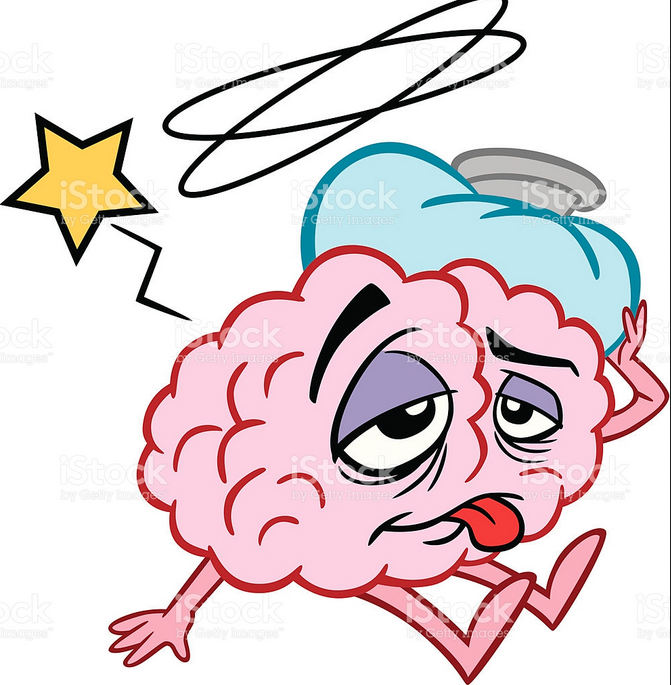
8 Classroom Brain Break Suggestions
Image Credit: Third Grade Thoughts
Brain Breaks are a tool we at AddyPres highly recommend to use for the classroom, at home and at work because brain breaks, by switching activity to different brain networks, allow the brain's resting pathways to restore their calm focus and foster optimal mood, attention, and memory--- this is how LEARNING IS ENABLED--- Judy Willis, MD.
In the classroom, younger children & those with a lot of energy and/or short attention spans really benefit from brain breaks in between heavy concentration periods, especially. Brain breaks can be done alone, with partners, in small groups or as a full class unit. We have suggestions for all!
DEFINED: What Is A Brain Break?
A brain break is a short mental break, usually about 3-5 minutes and work best when they incorporate physical activities. These breaks are taken at regular intervals during school, work or other activities that require high concentration. Despite the title, brain breaks aren't necessarily QUIET time, they can actually be quite lively, since they work best with physical activity. The essential purpose of a brain break is to enable the process of the brain to have the capacity to restore it's ability to take in and process new information. Read more about this scientific process in our article: The Science of A Brain Break.
3 Feel Good Brain Break Ideas By, Dr. Lori Desautels
We like Dr. Lori Desautels’ brain break suggestions (read the full Edutopia article Energy and Calm: Change It Up and Calm It Down. ) Dr. Lori offers that routine lulls the brain to sleep and depending on our age, we have a limited amount of time to stay focused and attentive. To learn, connect, memorize, and retrieve information, we must be awake and focused. Priming the brain for learning and positive emotion is critical for continued social, emotional, and cognitive development in our students’ lives. Brain states that invite novelty and quiet are instrumental to students' brain health and knowledge acquisition as they work through these practices and incorporate them into their day. The following [brain break] exercises implement both novelty and fun, engaging the curiosity that our brains crave:
- Describe your favorite food to a partner for 30 seconds using only adjectives. After your partner guesses, she describes her favorite place with adjectives, and you do the guessing.
- Write your name on a piece of paper, first with your eyes closed, and then using the opposite hand than you normally write with. Compare the differences. Share and discuss with a friend.
- Break the class into small pods. Place a pair of someone's shoes from each group on a table in front of the the group. Students in each pod will have one minute to describe what it might be like to walk in those shoes. Then take turns on whose shoes are used. This is a great opportunity to partner children who may have conflicts or misunderstandings with one another so they can start to find more compassion with each other.
3 Mindful Brain Break Ideas By, Susan Kaiser Greenland
Susan Kaiser Greenland’s Mindful Games Activity Cards offer some of our favorite brain break suggestions because of their mindful approach! You can order a box on our Book List, adapting the cards use to your own classroom needs. Susan wants to help children develop a kind inner voice that sounds like this: It's really hard to sit still right now, and that's OK. Everyone feels this way sometimes. I can sit here, feeling my body and all the energy I have- my breath moving fast, my heart breathing quickly- I can take a breath, listen to sounds, become aware of how I feel, and be OK. We want kids to have this inner voice too! Here we list some of our favorite brain break game titles and a short description. For the full activity you'll need to buy Susan's Mindful Games on our book list, but it'll change your classroom!
- Drop the Monkeys! With the help of a colorful plastic toy, we build a chain of monkeys to demonstrate how we can notice thoughts and let them go.
- Mind, Body, Go! We roll a ball back and forth, as we quickly name an emotion and a physical sensation that we're feeling right now!
- Shake It Up! We shake our bodies to the sound of a drum to release energy and to help us focus.
- Counting Breaths We count breaths to help us develop concentration. Just like playing a sport or an instrument, the more we practice, the better we are at concentrating.
GO Noodle, an awesome App for a variety of brain break opportunities!
Go Noodle is a really awesome FREE app that we suggest making available to children in your classroom, within a brain break corner and at home. Watch this YouTube for a simple tutorial.

